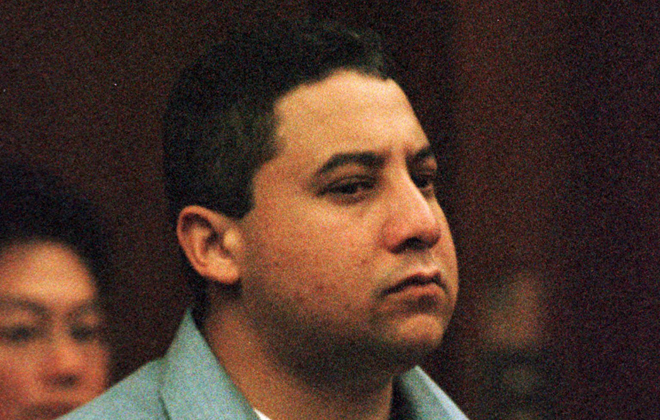Hawaii Innocence Project seeks review in Dana Ireland death

Albert Ian Schweitzer is shown in Hilo, Hawaii court Monday, Jan. 24, 2000, during opening arguments in his trial. He is accused of participating in the abduction, rape and murder of Dana Ireland on Dec. 24, 1991. (AP Photo/W.M. Ing, Pool)

19990529 - Site where Dana Ireland was found after the attack. CLR 3E Press release photo.

Dana Ireland



HILO » The Hawaii Innocence Project is seeking vindication for a man convicted in a notorious 1991 rape and murder case.
The Hawaii Tribune-Herald reports Opens in a new tab the group is seeking a review of the conviction of Albert “Ian” Schweitzer in the death of 23-year-old Dana Ireland, who had graduated from George Mason University in Virginia shortly before she died.
“We are representing Ian Schweitzer, and are seeking his vindication in the matter, but we’re in the process of doing our background research,” said Brook Hart, a Honolulu defense attorney and volunteer for the Hawaii Innocence Project.
“I’m in contact with (Hawaii County Prosecutor) Mitch Roth about the matter, but I think it’s premature to discuss the details publicly, except to say we have a strong belief that Albert Ian Schweitzer is not guilty of the offense . that he was convicted of.”
A second group, Judges for Justice, is calling for a review of Schweitzer’s case and those of co-defendants Frank Pauline Jr. and Shawn Schweitzer, Ian Schweitzer’s younger brother.
Ireland was riding a bike when she was run over, driven to a remote fishing trail, sexually assaulted and left to die, according to investigators.
Don't miss out on what's happening!
Stay in touch with breaking news, as it happens, conveniently in your email inbox. It's FREE!
Ian Schweitzer was convicted of kidnapping, rape and murder in 1999 and sentenced to a minimum of 130 years in prison.
Pauline was sentenced to a minimum of 180 years. Shawn Schweitzer, who was 16 when the crime occurred, was convicted of manslaughter. He was sentenced to five years’ probation.
Prosecutors at the trials acknowledged that the men’s DNA did not match semen inside Ireland’s body or on the hospital gurney on which she was carried.
Court records indicate Hart requested post-conviction DNA testing on evidence in February 2007. Ian Schweitzer’s DNA was not on the gurney or a shirt introduced as evidence, Hart said.
“None of Mr. Schweitzer’s DNA matches any of the DNA found with the gurney or on the T-shirt,” he said. “We’re trying to find out whose DNA it is, and that’s why we’ve asked Mr. Roth to do what’s necessary to run it through, or get the FBI to run it through its databases. But so far that matter hasn’t been resolved.”
Roth said he did not know if questions about DNA evidence can be answered.
“At this point, I don’t know of any evidence that’s available to be tested that hasn’t been tested that hasn’t had any possibility of contamination,” he said.
Prosecutors have not seen anything that has persuaded them to reopen the case, he said.



